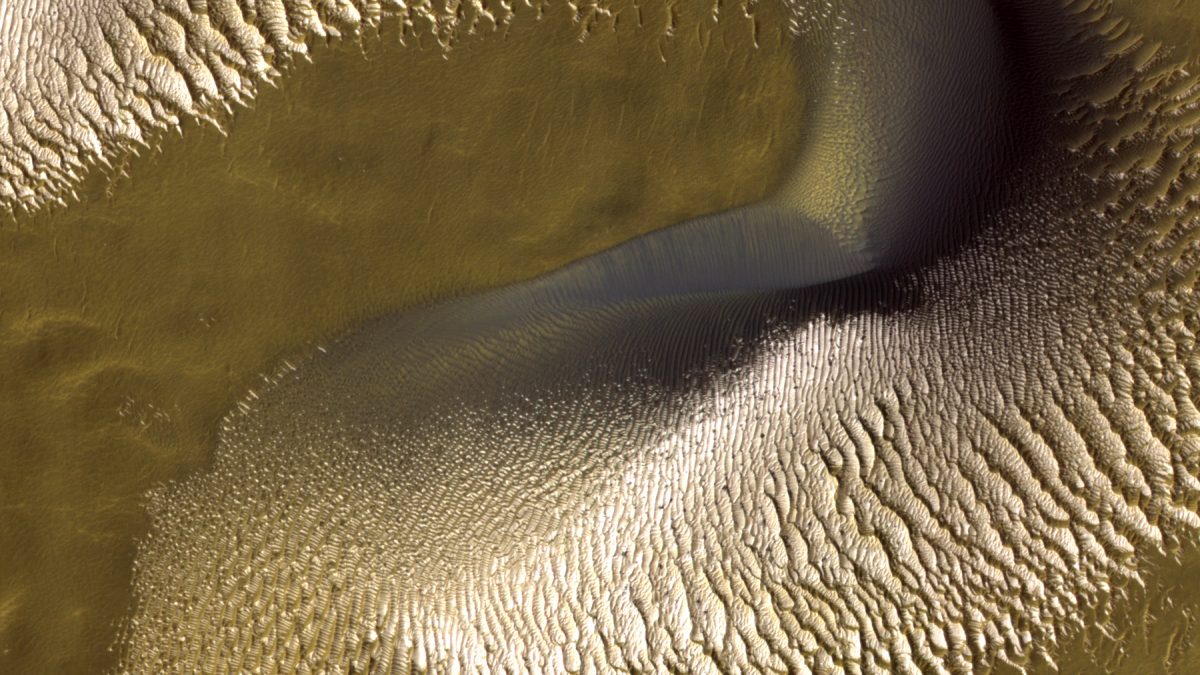Entourage

Wild & dark lacy dunes on twisty bright layers
April 30, 2018
The Mars Global Digital Dune Database
May 30, 2018Here’s a grand dune, making its stately way northward under winds blowing mainly from the south-southeast (bottom to top), with a secondary wind blowing from the southwest (lower left to upper right). There are two rippled and sharp-crested slip faces on this dune — can you identify both of them (hint: each wind creates one slip face on the downwind side)?

View is 900×900 m (0.56×0.56 mi), HiRISE ESP_046274_1300, NASA/JPL/Univ of Arizona
The dune is ~750 m (2,460 ft) long. It’s made of dark sand the wind blows along the ground until it piles up into these big mobile hills we call dunes.
But the dune isn’t alone. Trailing behind the dune, like a veil, is an entourage of smaller, paler ripples. These are coarse-grained ripples, made partly of larger grains that are too heavy to move as quickly as the finer dark sand that makes up the bulk of the dune.
In this image there’s a second set of trailing material: the bright white areas are remnants of seasonal CO2 frost that accumulated over the winter. These dunes are inside Maunder crater, which is located far enough south in Mars’ southern hemisphere that a bit of frost piles up there seasonally. In this image it’s late winter, and the frost has started to sublimate away, remaining only on the shaded slopes.
In a sense you can think of these dunes as individual geological “ecosystems”. They’re little islands where, for a (geologically) brief time, the wind allows sand to pile up, which moves downwind, allowing the abandoned larger grains to grow into their own ripples. The topography made by the dune also serves as a brief seasonal refuge for CO2 frost (and probably some H2O frost too). All we’re missing here is actual life to create a real ecosystem. (Or is there life there in microbial form? We still don’t know.)



